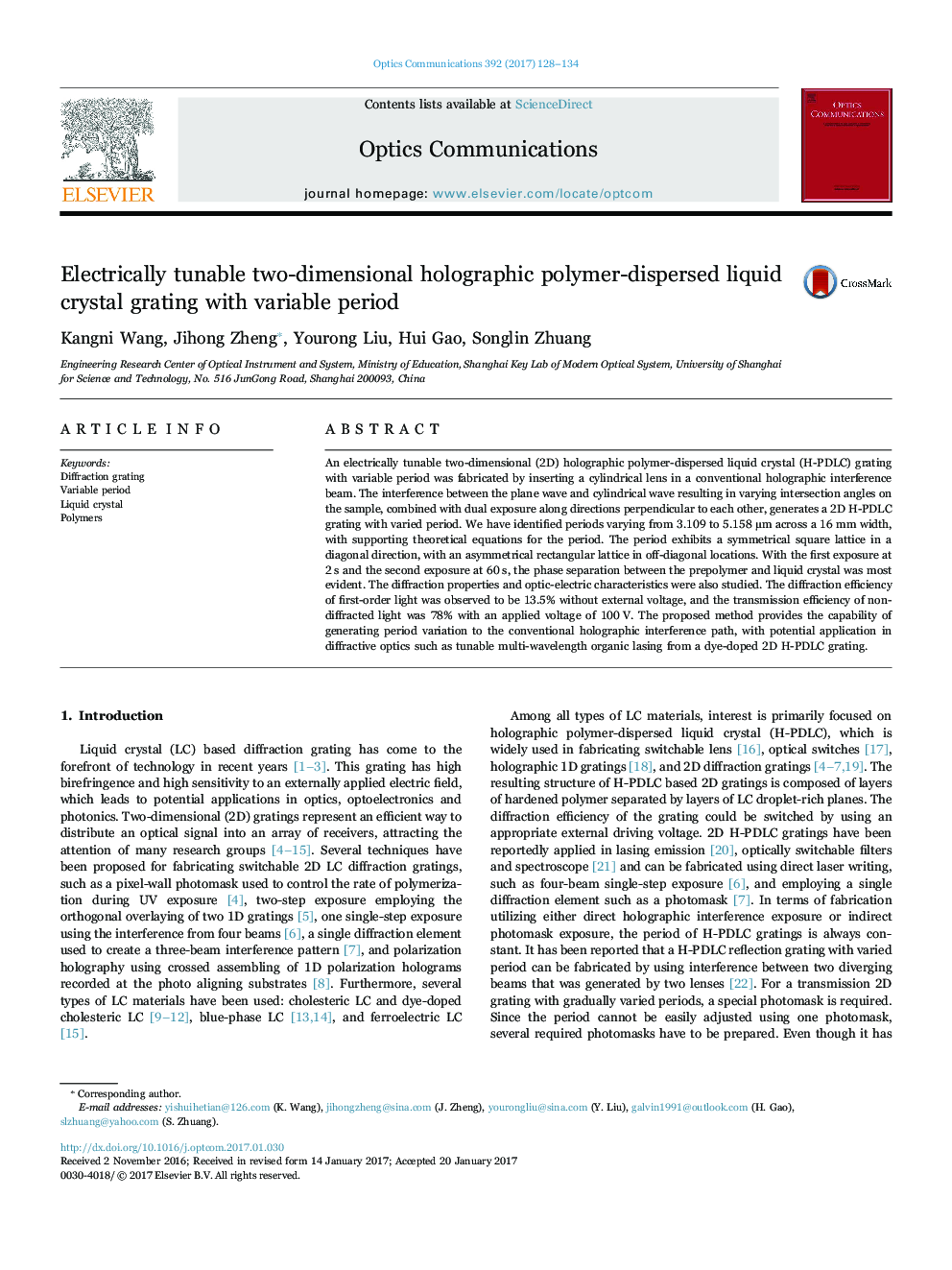| Article ID | Journal | Published Year | Pages | File Type |
|---|---|---|---|---|
| 5449594 | Optics Communications | 2017 | 7 Pages |
Abstract
An electrically tunable two-dimensional (2D) holographic polymer-dispersed liquid crystal (H-PDLC) grating with variable period was fabricated by inserting a cylindrical lens in a conventional holographic interference beam. The interference between the plane wave and cylindrical wave resulting in varying intersection angles on the sample, combined with dual exposure along directions perpendicular to each other, generates a 2D H-PDLC grating with varied period. We have identified periods varying from 3.109 to 5.158 µm across a 16 mm width, with supporting theoretical equations for the period. The period exhibits a symmetrical square lattice in a diagonal direction, with an asymmetrical rectangular lattice in off-diagonal locations. With the first exposure at 2 s and the second exposure at 60 s, the phase separation between the prepolymer and liquid crystal was most evident. The diffraction properties and optic-electric characteristics were also studied. The diffraction efficiency of first-order light was observed to be 13.5% without external voltage, and the transmission efficiency of non-diffracted light was 78% with an applied voltage of 100 V. The proposed method provides the capability of generating period variation to the conventional holographic interference path, with potential application in diffractive optics such as tunable multi-wavelength organic lasing from a dye-doped 2D H-PDLC grating.
Related Topics
Physical Sciences and Engineering
Materials Science
Electronic, Optical and Magnetic Materials
Authors
Kangni Wang, Jihong Zheng, Yourong Liu, Hui Gao, Songlin Zhuang,
